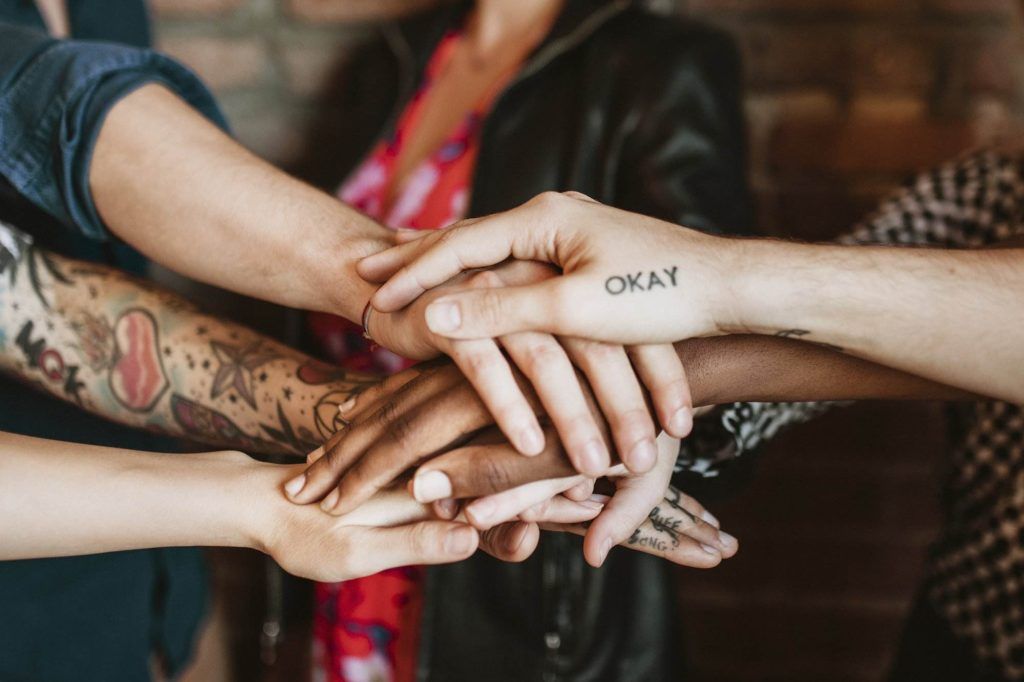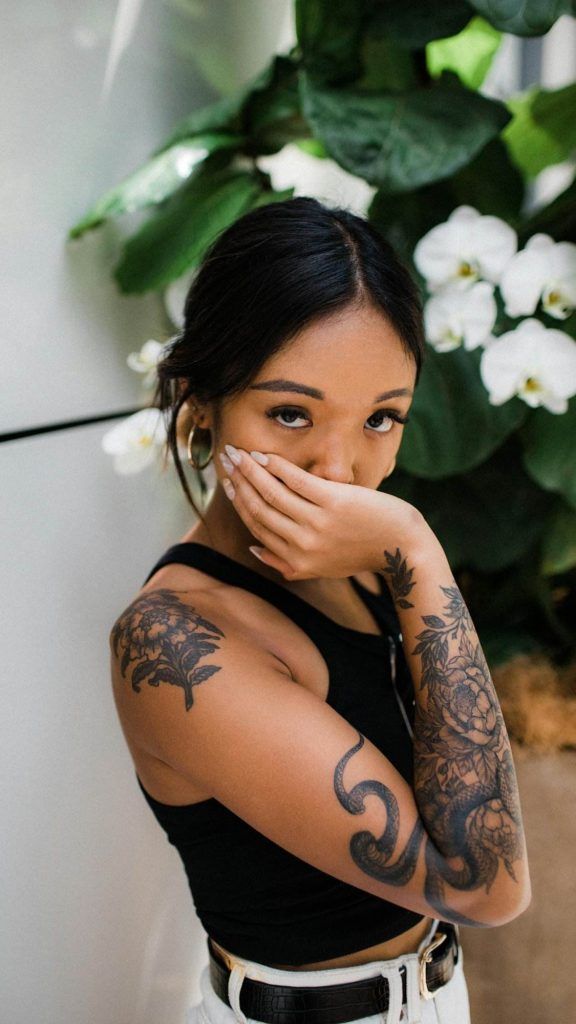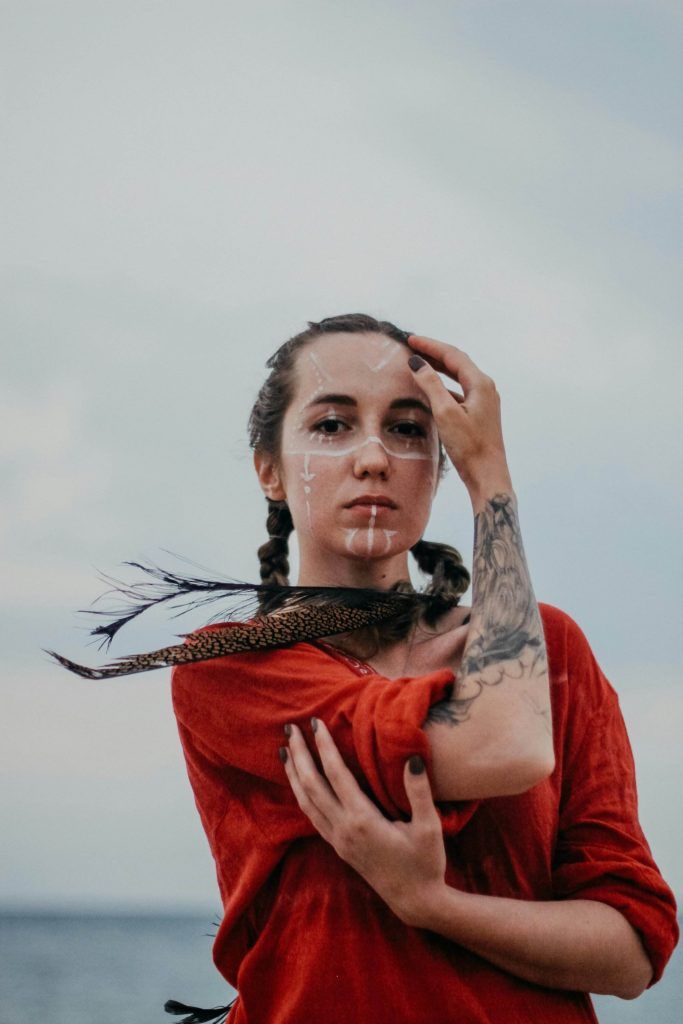Introduction to Tattoos as a Form of Self-Expression
Tattoos have long been more than mere body art; they are powerful symbols of individuality and personal history. To understand their impact as a form of self-expression, one must first explore the rich tapestry of tattoo history.
History of Tattoos
From the ancient practice of tribal marking, tattoos have served numerous purposes across cultures. They symbolize rites of passage, status, and even protection. For instance:
- Ancient Egypt: Tattoos were worn by women for fertility.
- Maori Culture: Facial tattoos conveyed lineage and social status.
Over centuries, as these customs evolved, tattoos transitioned from symbols of belonging to canvases of personal and societal messages.
Importance of Self-Expression
Today, tattoos continue to serve as a vital means of self-expression. They allow individuals to:
- Narrate personal stories
- Showcase beliefs and values
- Celebrate significant life events
Ultimately, through tattoos, many find a voice in a world eager for individuality and meaning.

Cultural Significance of Tattoos
As tattoos have evolved through history, their cultural significance has grown, reflecting deeper meanings within various societies. Understanding this significance begins with examining indigenous tattoo traditions.
Indigenous Tattoo Traditions
For many indigenous cultures, tattoos represent a rite of passage, identity, and a connection to ancestry. For example:
- Polynesian Tribes: Tattoos often symbolized social status and accomplishments, with designs passed down through generations.
- Inuit Cultures: Facial tattoos were essential for marking milestones in a person’s life.
These tattoos are imbued with stories and cultural narratives that help communities retain their heritage.
Modern Cultural Trends
In contrast, modern cultural trends emphasize personal stories and individual expression. Today, tattoos often reflect:
- Personal beliefs like spirituality or activism
- Trends in pop culture, such as minimalist designs or vibrant watercolors
This blend of historical significance and contemporary meaning showcases tattoos not only as art forms but also as vital statements of identity in today’s diverse landscape.
Psychological Aspect of Tattooing
Delving deeper into the world of tattoos reveals significant psychological attributes that influence individuals’ choices. As we explore the connection between personal identity and tattoos, it becomes clear that body art serves a profound purpose in one’s life.
Personal Identity and Tattoos
Tattoos often play a crucial role in shaping and affirming personal identity. They can represent:
- Cultural heritage and ancestry
- Milestones in a person’s life, such as overcoming challenges
By adorning their bodies with symbols or narratives, individuals create a personalized manifesto of who they are.
Emotional Expression through Body Art
Additionally, tattoos offer a unique avenue for emotional expression. Many people choose tattoos to:
- Memorialize loved ones
- Confront personal struggles, using imagery as a coping mechanism
Through self-expression, tattoos transform pain into art, enabling individuals to share their stories in powerful ways. This intersection of psychology and body art highlights the relational depth of tattoos beyond aesthetic appeal.
Tattoos as a Means of Artistic Expression
The vibrant world of tattoos transcends mere body art; it serves as a unique platform for artistic expression. Transitioning from emotional connections, we now explore the artistic dimensions of tattooing.
Tattoo as a Canvas
In its essence, the human body acts as a canvas, allowing artists to create intricate designs that can alter over time. This form of expression includes:
- Realistic Portraits: Capturing lifelike representations of loved ones or icons.
- Abstract Art: Allowing for creative freedom through shapes and colors, transforming the body into a true masterpiece.
Each tattoo tells a story, making every individual a living gallery of their experiences.
Fusion of Art Styles
Moreover, tattooing has seen the fusion of diverse art styles, bringing innovative designs to life. Artists blend techniques such as:
- Traditional and Neo-Traditional
- Japanese and Tribal Elements
This mixing of styles allows for personalizations that reflect unique identities, making tattoos not just body art but culturally significant works of art in their own right.
Gender and Tattoos
As we delve into the realm of gender and tattoos, it is essential to recognize how societal norms shape perceptions of body art. This exploration not only highlights gender stereotypes but also underscores the empowerment that tattooing can provide.
Gender Stereotypes and Tattoos
Traditional gender stereotypes often influence tattoo choices and visibility. For example:
- Women: Frequently face societal scrutiny for tattooing, seen as rebellious or unprofessional.
- Men: Often encouraged to embrace tattoos as symbols of masculinity and strength.
These stereotypes can limit self-expression, but many individuals defy these norms.
Empowerment through Tattooing
Tattooing serves as a profound form of empowerment for all genders. Many individuals utilize tattoos to:
- Reclaim their bodies after trauma.
- Express their identities unapologetically.
Through tattoos, people find liberation in embracing their uniqueness, breaking down stereotypes, and crafting their narratives, ultimately fostering a sense of community and belonging.
Social Acceptance and Stigma of Tattoos
As tattoos continue to grow in popularity, the conversation around social acceptance and stigma becomes increasingly relevant. By examining the changing perceptions and efforts to overcome prejudices, we can better understand this evolving landscape.
Changing Perceptions
Once viewed as markers of rebellion or societal deviance, tattoos are now widely embraced as a form of self-expression. Recent trends illustrate this shift:
- Celebrity Influence: Increasing visibility of tattooed celebrities reshapes mainstream attitudes.
- Professional Landscapes: Many workplaces are now more accepting of visible tattoos, reflecting broader societal change.
This transformation allows for a deeper appreciation of tattoos as art, rather than mere fashion statements.
Overcoming Prejudices
Despite progress, prejudices remain. However, individuals can challenge these biases through:
- Engaging conversations about the significance of tattoos.
- Sharing personal experiences to humanize the art.
By fostering understanding, society can break down stereotypes, paving the way for a future where tattoos are embraced as valid forms of expression across all demographics.
Tattooing as a Form of Rebellion
Diving into the intriguing relationship between tattooing and rebellion, one finds that body art often serves as a bold statement against societal expectations. This exploration delves into the subversive nature of tattoos and their power to challenge the norms that typically govern personal expression.
Subversive Nature of Tattoos
Historically, tattoos have been employed as acts of defiance and identity assertion. They often symbolize:
- Rejection of conformity: A visible reminder that individuality matters.
- Cultural reclamation: Many use tattoos to reclaim lost heritage or narratives that have been disregarded.
By wearing their stories on their skin, individuals publicly assert their unique identities.
Challenging Societal Norms
Moreover, tattooing challenges societal norms by pushing back against traditional ideas of beauty and professionalism. Many individuals opt to:
- Embrace unconventional designs that defy mainstream aesthetics.
- Display their tattoos in environments where they might face judgment.
This act of proudly showcasing tattoos fosters a culture of acceptance, reinforcing the idea that self-expression should never be confined by societal standards.
Evolution of Tattooing Techniques
As the world of tattooing evolves, so do the techniques and tools that artists employ to create intricate designs. Transitioning from the societal contexts of rebellion, it’s fascinating to explore how traditional and modern tattooing techniques have developed over time.
Traditional vs. Modern Techniques
Traditional tattooing often relies on age-old methods, such as hand-poked techniques or bamboo tattoos. These methods emphasize:
- Cultural Heritage: Each style reflects the history and rituals of the culture it originates from.
- Personal Connection: Many artists continue to practice these techniques, honoring their lineage.
In contrast, modern techniques incorporate machinery, allowing for more precise and efficient work.
Innovation in Tattoo Equipment
Recent years have seen significant innovations in tattoo equipment, making the process safer and easier. Notable advancements include:
- Rotary Machines: Offering quieter operation and smoother lines.
- Wireless Equipment: Enhancing the artist’s mobility during sessions.
These innovations not only improve the overall experience for both artist and client but also expand the creative possibilities for tattoo designs, ensuring that the art continues to flourish in various forms.
Tattoo Removal and Regret
While tattoos often serve as cherished forms of self-expression, the reality of tattoo removal and the accompanying feelings of regret can also emerge. Transitioning from the advancements in tattooing techniques, it’s important to address the complexities involved in removing these permanent marks.
Risks and Considerations
Tattoo removal isn’t as straightforward as one might think. It comes with various risks and considerations, such as:
- Skin Damage: Potential for scarring or pigmentation changes.
- Incomplete Removal: Some inks may not fully fade, leaving residual marks.
Understanding these risks helps individuals make informed decisions before opting for removal.
Psychological Impact
Additionally, the psychological impact of tattoo regret can be profound. Many individuals may experience:
- Emotional Turmoil: Feelings of loss or identity crisis if a meaningful tattoo becomes a source of regret.
- Self-Perception Issues: Struggling with how others perceive them based on their existing tattoos.
Ultimately, addressing both the physical and emotional aspects of tattoo removal is crucial for anyone contemplating this significant change.
Celebrities and Tattoos

As tattoo culture continues to evolve, the role of celebrities in shaping public perceptions cannot be overlooked. Transitioning from the emotional complexities of tattoo removal, it’s fascinating to explore how celebrity influence and artistry have transformed the tattoo landscape.
Influence of Celebrity Culture
Celebrity culture plays a pivotal role in popularizing tattoos among fans worldwide. Influential figures often set trends and normalize body art in various ways, including:
- Visibility: Frequent appearances in films, music videos, and social media platforms showcase their tattoos.
- Storytelling: Celebrities often share the meaningful narratives behind their tattoos, encouraging fans to consider their own body art.
This visibility fosters acceptance and can inspire individuals to embrace tattoos as a valid form of self-expression.
Celebrity Tattoo Artists
Additionally, many tattoo artists gain fame through their work with celebrities, blending artistry with celebrity culture. These artists often become trendsetters by:
- Crafting unique designs that reflect their clients’ personalities.
- Offering workshops and sharing their techniques with aspiring tattoo artists.
The synergy between celebrities and tattoo artists not only elevates the art form but also encourages more people to explore tattoos as a significant aspect of their identity.
Global Perspectives on Tattooing
As the world continues to embrace body art, it’s essential to consider global perspectives on tattooing, especially in light of international trends and cultural sensitivities. Following the influence of celebrities and their impact on tattoo culture, let’s explore the diverse manifestations of tattoos worldwide.
International Tattoo Trends
Tattoo trends vary widely across different cultures, each reflecting unique values and artistry. Some notable trends include:
- Japanese Irezumi: Known for its vibrant colors and detailed imagery, this tradition encompasses significant cultural themes.
- Blackwork: This minimalist style, popular in Europe, emphasizes bold black lines and geometric shapes.
These trends highlight the cultural significance and artistry associated with tattoos, inviting appreciation across borders.
Cultural Appropriation in Tattoo Art
However, with the globalization of tattoo culture arises the issue of cultural appropriation. It’s crucial to recognize:
- Respect for Traditions: Using symbols without understanding their cultural significance can lead to misrepresentation.
- Dialogue and Awareness: Engaging in conversations about the origins and meanings of designs helps foster respect and appreciation.
Being mindful of these aspects ensures that tattooing remains an inclusive celebration of diversity rather than a source of offense or misunderstanding.
Legal and Ethical Issues in Tattooing
As the tattoo landscape continues to grow and evolve, so too do the legal and ethical challenges it faces. Transitioning from cultural considerations, it’s crucial to delve into the complexities surrounding copyright and informed consent in the tattoo world.
Copyright and Intellectual Property
One significant issue is the protection of original designs and artistic expressions. Tattoo artists often encounter challenges related to:
- Ownership of Designs: Disputes may arise over who owns the rights to a tattoo—a contentious debate when designs are replicated or modified.
- Use in Media: The representation of tattoos in films or advertisements raises questions about the rightful compensation and acknowledgment of the original artist.
Understanding copyright laws can help artists protect their work and promote fair practices.
Informed Consent and Tattooing
In addition to copyright issues, informed consent is vital in the tattooing process. Key considerations include:
- Client Awareness: Ensuring clients understand potential risks, aftercare, and the permanence of tattoos before proceeding.
- Documentation: Requiring clear documentation of consent helps protect both the artist and the client in case of disputes.
By addressing these legal and ethical dimensions, the tattoo industry can promote responsible practices that honor the rights and well-being of all parties involved.
XIII. Self-Expression Beyond Tattoos
While tattoos serve as a powerful medium for self-expression, they are not the only forms individuals use to convey their identities and emotions. Building upon the legal and ethical considerations in tattooing, it is essential to explore alternative avenues for expressing oneself.
Alternative Forms of Self-Expression
Many people find personal meaning in a variety of artistic outlets, such as:
- Body Painting: Temporary art that allows for vibrant, creative expression without permanence.
- Fashion Choices: Clothing and accessories can serve as visual statements about personal style and beliefs.
- Writing: Journaling or poetry can articulate feelings that one may not express through visual means.
All of these avenues allow individuals to connect with their innermost thoughts and present their narratives uniquely.
Combination of Different Artistic Mediums
Furthermore, individuals often blend various artistic mediums to enhance their self-expression. This fusion can include:
- Mixed Media Art: Incorporating elements like photography and collage alongside traditional painting.
- Performance Art: Using movement, music, and storytelling to convey emotions and messages.
By embracing multiple forms of art, individuals can develop richer, more complex representations of themselves, expanding the boundaries of how self-expression is understood and experienced.
XIV. Conclusion: Embracing Self-Expression through Tattoos
In closing, the journey through the multifaceted world of tattoos reveals their profound significance as a form of self-expression. Building upon the exploration of alternative artistic avenues, it’s clear that tattoos stand out due to their permanent nature and personal narratives.
The Power of Tattoos
Tattoos serve not just as visual statements but as essential pieces of an individual’s identity. They encompass:
- Personal Stories: Each design holds a unique tale, reflecting milestones, beliefs, and emotions.
- Cultural Connections: Tattoos foster appreciation and respect for diverse traditions and histories.
By embracing tattoos, individuals assert their identities in a society that increasingly values authenticity and personal expression.
Encouragement for Exploration
As we celebrate this art form, let us encourage open dialogues about its significance, empowerment, and even the associated challenges. Ultimately, tattoos can be seen as a beautiful means to honor oneself and inspire others to share their stories authentically.



